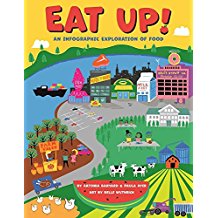2018 School Spending Survey Report
Eat Up!: An Infographic Exploration of Food
BANYARD, Antonia & . illus. by Belle Wuthrich. 72p. bibliog. charts. diag. further reading. glossary. index. websites. Annick. Apr. 2017. Tr $22.95. ISBN 9781554518845.
COPY ISBN
VERDICT Inviting illustrations and an empowering amount of food-related data make this selection a fine choice for environmentally conscious tweens.
RELATED
ALREADY A SUBSCRIBER? LOG IN
We are currently offering this content for free. Sign up now to activate your personal profile, where you can save articles for future viewing





Be the first reader to comment.
Comment Policy:
Comment should not be empty !!!